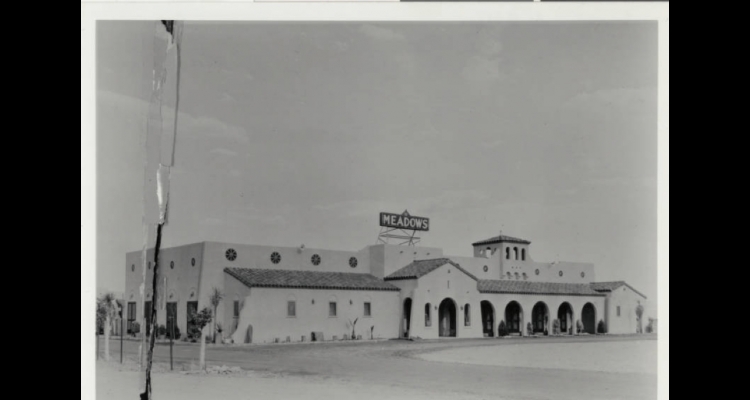Meadows Club
The Meadows Club was one of the first casinos to open in Las Vegas in the weeks after the Nevada legislature legalized casino gambling in March 1931, during the prohibition era. In its early years, the Meadows, with its live entertainment and fancy interior, was regarded as the finest casino in Las Vegas, and a forerunner of the modern casinos that followed in the 1940s.
The Cornero brothers Louis and Frank, both former bootleggers from Los Angeles, started building the Meadows in early 1931. Their brother Tony, himself an infamous rumrunner, was serving time in prison for illegal liquor sales in California.
Louis and Frank obtained a gambling license that April for two craps tables, two roulette tables, two blackjack tables, two poker tables, English hazard, faro and Big Six Wheel games, and five slot machines.
The Meadows, named after the English translation of the Spanish "Las Vegas," debuted on Boulder Highway, near the convergences of Charleston Boulevard and Fremont Street, on May 2, 1931. While most other casino clubs in Las Vegas were small, saloon-like taverns, the Meadows was immediately considered the most attractive place in town, with its casino decorated in blue velour and cabaret for a house band and traveling musical acts. Tony had to wait until his release from prison in August to pay a visit.
Louis and Frank spend a then-fortune $31,000 to build the Meadows and announced plans to add a fifty-room hotel, vowing to make it the state's "finest resort." They brought in a producer with experience earned in New York and Hollywood who presented a floorshow called the "Meadows Revue," with a band from Los Angeles known as the Meadow Larks. They hired a chef from Lost Angeles to opertate the casino's signature italian restaurant.
The brothers had decided to locate the club on the newly paved Boulder Highway, which was the main route into Las Vegas taken by workers from the Boulder Dam (now Hoover Dam) project at the Nevada-Arizona border. The club became a popular lunch and evening hangout for the city's dignitaries, such as Las Vegas Mayor Fred Hesse and his wife, Patricia, and its well-to-do citizens. It was the town's best nightclub, where men and women would dress in their best clothes.
The club's concert stage features performers such as the Gumm Sisters, with a young girl names Frances Gumm, later known as Judy Garland.
Louis, the project's general manager, oversaw construction of a small, single-story hotel beside the casino. But that September, a fire broke out in the boiler room near the kitchen, and the casion, their biggest moneymaker, burned to the ground. The hotel remained open, but the Corneros could not stay in business. They sold the property in 1935 to Dave Stearns, his brother Sam Stearns, and Larry Potter.
The new owners reopened the casino club later that year, but soon ran into trouble. The county had placed restrictions on female dancers in all licensed casinos that served alcohol. In November 1935, Clark County District Attorney Roger T. Foley claimed the club had ignored his warnings about permitting a woman to perform a "Fan Dance" (dancing nude or partially clothed under large feathered fans) in an "indecent manner."
In a compromise with county officials that prevented the Meadows from losing its license, Sam Stearns agreed to make changes the county wanted, and operate the casino himself.
But the Meadows never regained its early popularity. Under different ownership, it declined, operating only as a hotel. The hotel evolved into a notorious place frequented by prostitutes. It was finally closed down for good in 1942, as a local nuisance, in recognition of the growing presence of the military in Las Vegas at the start of World War II.
Article Locations
Related Articles
None at this time.

